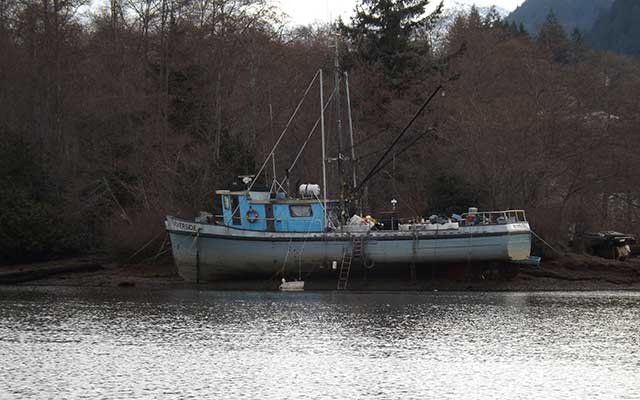The Mamquam Blind Channel has become Squamish's fastest growing neighbourhood. But not everyone is happy with this, and boat owner James Gracie has shared his concerns about the state of the channel with the District of Squamish.
When he recently cleaned the bottom of his boat he couldn't get a seven-centimeter stain off the water line using a power washer.
"It was a foul mix of dirty water, human excrement, cooking grease, lubricants and many other kinds of waste," Gracie wrote in a hand-written letter addressed to a long list of people he felt would share his concerns, including DOS council and Mayor Rob Kirkham.
He said he had to use sandpaper to get the crud off his vessel, which he berths at the Sea to Sky Marina near the railway and Highway 99 bridges that span the channel. The number of people living in boats or squatting on the edge of the channel has grown significantly.
"The big change in the last year has been (the appearance of a) shanty town on the water," said Gracie. "It is a bunch of bums living on boats down there."
He said that along the channel from Stawamus Creek to the railway bridge there are 22 boats improperly anchored or moored with at least six of them housing permanent residents. He said one day while he was working on his boat he was struck by the heavy smell of sewage. The odour had to come from a holding tank being dumped into the channel, Gracie concluded.
Bill McEnery, the manager of the Squamish Harbour Authority, is also concerned about the number of live-aboard vessels in the Mamquam Blind Channel.
He noted that a pump out station was installed at great expense, but he said the station isn't being used as much as he would expect by the people living on the channel.
"We're the False Creek of Squamish," said McEnery, referring to Vancouver's recent struggles with long-term vessel moorage in the body of water right in the middle of the city.
There are federal and provincial regulations around water vessel waste management, but both McEnery and Gracie said nobody is enforcing the rules and there's no repercussions for those who don't abide by the rules.
"It's a situation where no one wants to do anything," said McEnery.
Gracie offered a solution that would involve the Squamish bylaw department being given the power to enforce existing regulations.
"The bylaw enforcement people are the route to take on this," said Gracie.
"It's easy to fix, someone just has to go out there and say, 'Where's your holding tank?' and if you don't have a holding tank here's your ticket."
Vessels are moored on the shoreline at a number of neglected waterfront properties where residential developments are proposed, including the large stretch of waterfront land once used by Interfor as part of its lumber operations in Squamish.




